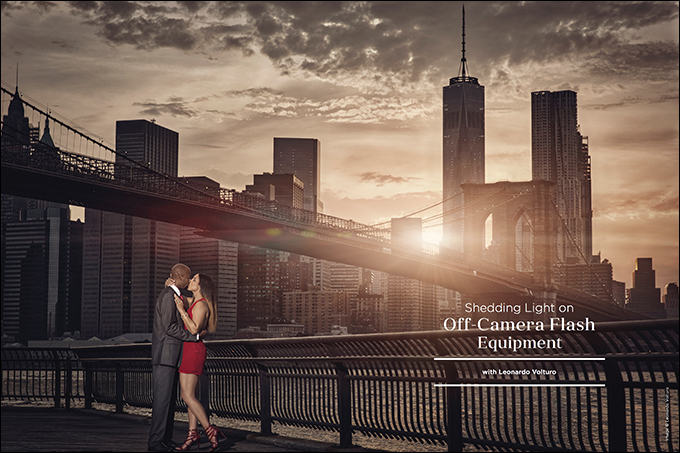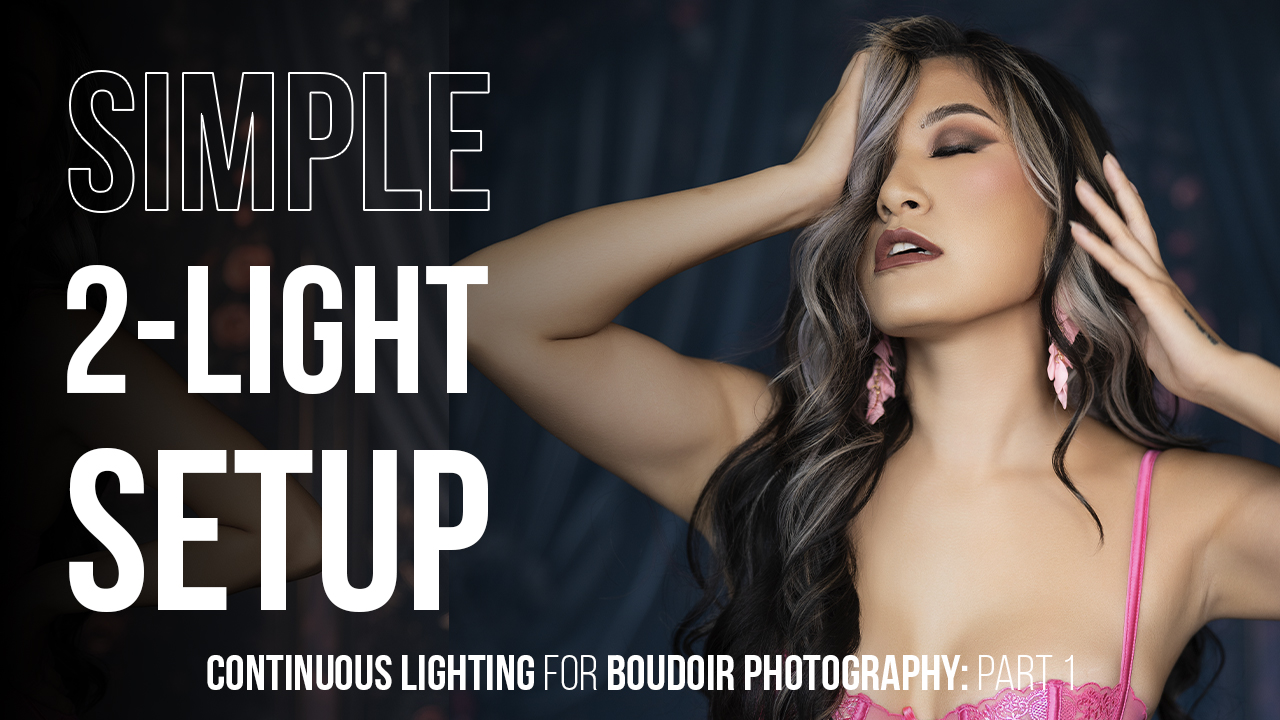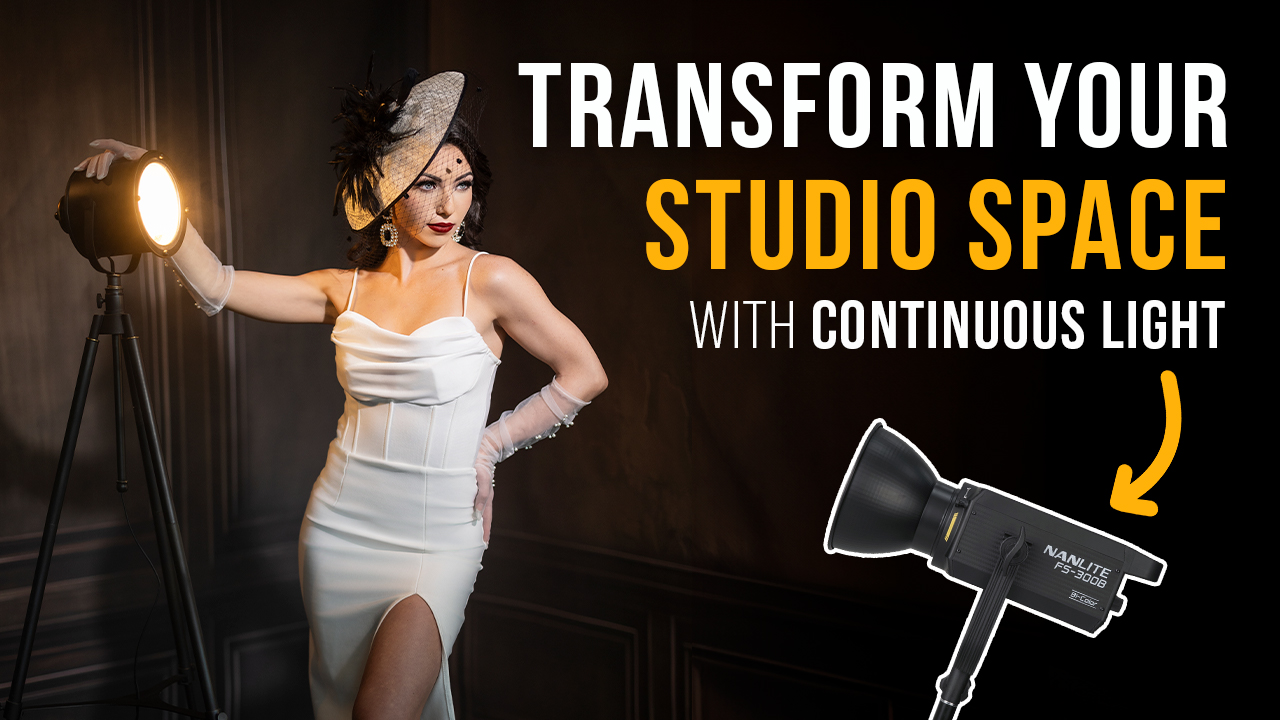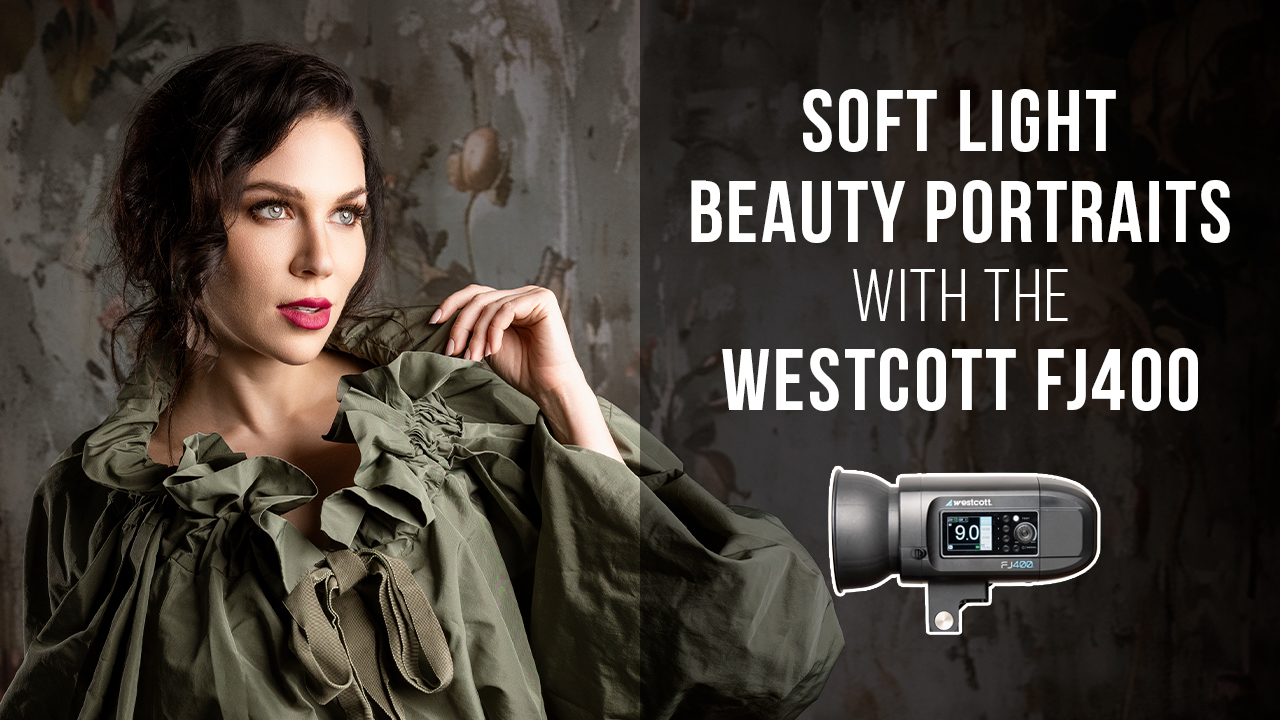Shedding Light on Off-Camera Flash Equipment with Lenny Volturo
If you’re in the market for off-camera flash (OCF) equipment but confused by all the options, you’re not alone. This month, I’ll help shed some light on the pros and cons of the industry’s leading systems.
Speedlights
These handheld flashes are great because they’re one of the most portable, they’re lightweight and compact, and they often have a lower cost of entry than other systems. Must-have features include through-the-lens metering (TTL) and high-speed sync (HSS). TTL allows the camera to automatically adjust flash power based on what it determines to be the correct exposure. High-speed sync is great because it allows you to shoot at any shutter speed, giving you the ability to shoot at wider apertures to achieve the look you want without the restriction of the camera’s built-in maximum flash sync speed. (For more on the benefits of high-speed sync, check out Michael Corsentino’s HSS article in this month’s issue.)
Recycle rate
In the minus column, speedlights have very slow recycle rates. Recycle is the length of time it takes a flash to recover after being fired; once recycle is complete, the flash is ready to deliver full power output again. A few AA batteries really can’t keep up, especially if you’re shooting at high power and fairly quickly. To combat that, you can purchase external battery packs that plug into your speedlight and decrease recycle time. But now you’re increasing cost and decreasing portability, and putting unnecessary strain on your speedlights that can damage them.
Triggering
To fire your speedlights, you’re going to need a transmitter on your camera and a receiver plugged into your speedlight. The most popular option is the PocketWizard. Going that route adds additional expense and something else hanging from your light. Alternatives include the Canon 600EX-RT or the Phottix Mitros+ systems, which come with built-in radio transmitters, eliminating the need for any add-ons.
Power
The biggest issue you’re going to run into is lack of power. You should be OK when your subject is close to your light source and you’re not trying to battle the sun. When I’m out in the brutal Miami sun, I need all the power I can get. That means you’re going to want to start looking at larger, more powerful strobes. Current portable strobe options will give you anywhere from four to 10 times the power over even the best speedlight. So when you start talking about using four or more speedlights to get the power and flexibility that you need, you’re at or above the cost of portable strobe options.
If speedlights are already part of your kit, then I suggest you work with them to get your feet wet with OCF. Push their capabilities as far as you can. When you’re starting to feel like you need more power, you’ll know it’s time to consider portable strobes.
Portable Strobes
Portable strobes come in two flavors: “pack and head” systems and self-contained monolights.
Pack-and-head
These systems include a battery pack with a separate corded flash head. The two most popular choices are Profoto’s B2 and Phottix’s Indra500. A two-head Indra kit is just over $2,000, and a two-head Profoto B2 kit is $2,595. Both systems sport TTL, HSS, a modeling lamp (to help with focus and provide a preview of your lighting) and built-in radio triggering, with full control over all settings from their controllers. They also feature very fast recycling times: The Indra500 ranges from 0.1 to 2 seconds, and the B2 clocks in at an even faster .03 to 1.35 seconds.
Profoto vs. Phottix
I am a Profoto shooter, and I’ve had my hands on the Indra500 only a couple of times. For a little added insight, I reached out to my friend Rob Roscigno, a talented wedding and portrait photographer based in New York City. Rob’s been working with an Indra500 for several months.
“One of the immediate attractions to the Indra was that it has the Phottix Odin [radio flash triggering system] built right into the strobe,” says Rob. “This meant that I could combine strobes and speedlights with one system since I was already using the Odin system to trigger my Nikon speedlights.” Having that ability to mix strobes and speedlights is definitely a standout feature. For example, you could use the strobe as your keylight and a speedlight as a fill or rim/hair light, which typically don’t require as much power.
I asked Rob if there was anything he didn’t like.
“If I had one complaint, it would be having to use a separate head and battery pack,” he told me. “But for the convenience of mixing speedlights and strobes, I decided that having a separate head and battery was worth the small inconvenience.”
The Indra500 puts out 500 watts per second, while the Profoto B2 puts out 250 watts per second. That’s a one-stop reduction in light output, which may be underpowered for some applications. Both battery packs can power two flash heads, which increases flexibility, but you have to be willing to divide the pack’s power between the two flash heads. Therefore, if you wanted two lights at full power, you would need a separate battery pack for each head. When it comes to battery performance for each system, you’re looking at around 340 full power flashes for the Indra500 and 215 for the Profoto B2.
The Profoto B2’s, which are now a part of my location lighting kit, are extremely lightweight, weighing in at only 2.2 lbs. for the battery pack and a very slender 1.5 lbs. for the flash heads. I love how compact they are. The B2 flash head fits easily in the palm of your hand. I’ve used these über-portable strobes for fast-moving shoots in NYC, in extremely tight spaces and on 13-foot light stands, all with no issues. Profoto has also launched an entirely new line of light-shaping tools for its OCF systems. Each is extremely portable and very quick to set up, great for location work.
The B2’s corded flash head might be an issue for some, but for me it hasn’t been. The build is rock solid, just what you’d expect from a Profoto product.
Both of these pack-and-head systems offer great flexibility and portability, with plenty of power to get the job done.
Monolights
The next category of portable battery-powered strobes is monolights. These have removable, rechargeable batteries built right into the head. They’re completely cordless and come with built-in radio control.
Profoto B1
The current king of this category, the Profoto B1, was released at the end of 2013 and was the first of its kind. It features 500 watts per second of power, TTL, HSS and a modeling lamp, and is completely wireless. The B1 provides up to 220 full power flashes and recharges its battery in as little as an hour. We use several of these in our studio and for location work. The downside is its weight, at just over 6.6 lbs. Your assistant may need frequent breaks from holding it, so use a light stand and sandbags when you can. The B1 is also the most expensive, coming in at $2,095 at this writing.
Other options
There are a couple of other options in the battery-powered monolight market. One is Dynalite’s 400 watts-per-second Baja, which comes in at $599. This unit has a 3.7 second recycle rate compared to the B1’s 0.1 to 1.9 seconds. It has only a six-stop power range, compared to the B1’s nine stops (same with the B2), allowing you more control to fine-tune your light output. The modeling lamp is a 5-watt LED, while the B1’s LED delivers 20 watts. Another possibly better-known unit than the Dynalite is the Flashpoint RoveLight. It’s a 600-watt second monolight carrying over the same features as the Dynalite.
Dynalight vs. RoveLight
Both units lack TTL metering. This may be a deal breaker for some. The RoveLight’s battery is capable of up to 500 full power flashes, compared to 550 for the Dynalite, and has a recycle time of 0.3 to 4.5 seconds (compared to RoveLight’s 3.7 seconds).
Build quality
The biggest concern for me with both units is build quality. They just don’t have the rugged feel of other units on the market. For more perspective, I turned to someone who has been using the RoveLight for some time, my friend Amanda Jayne, an Idaho-based photographer, who agrees: “The overall feel isn’t that of a high-quality piece of equipment, unlike the Profoto B1, which just feels sexy.”
I’ve heard people report issues with the RoveLight’s included remote, saying it barely works. Amanda doesn’t have much of an issue with the remote, though, and estimates she ends up opting instead for something like a PocketWizard in only very rare cases. It does get praise for its power and battery life, as well as the Bowens mount option that allows it to accept a wide variety of light modifiers; the same mount is included with the Phottix and Dynalite products. The RoveLight is also affordable at just $599, offering a lot of power per dollar.
All of the tools in this segment offer great power and the quickest setup to get out there and start shooting.
Conclusion
After reading this, you may still be asking yourself what the right system is for you. The reality is, there isn’t a one-size-fits-all solution. It’s all about finding the right tools for your needs—tools that help you get the job done and offer the features that matter most to your work.








